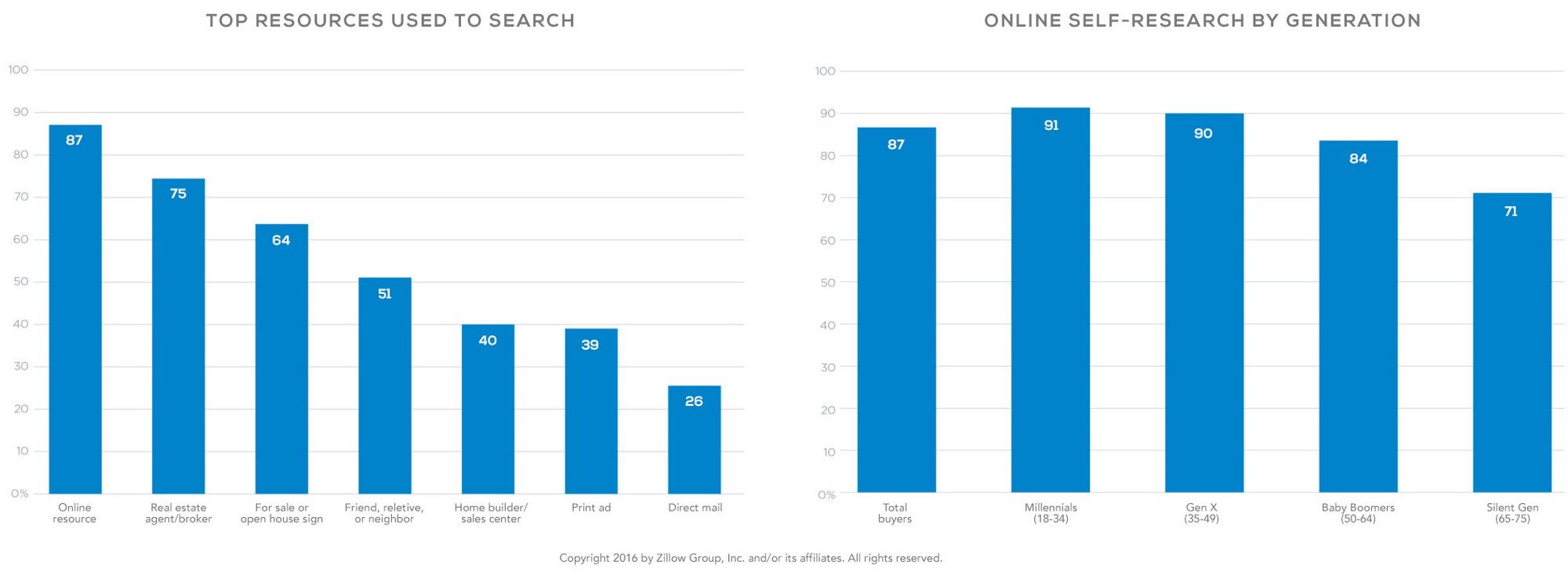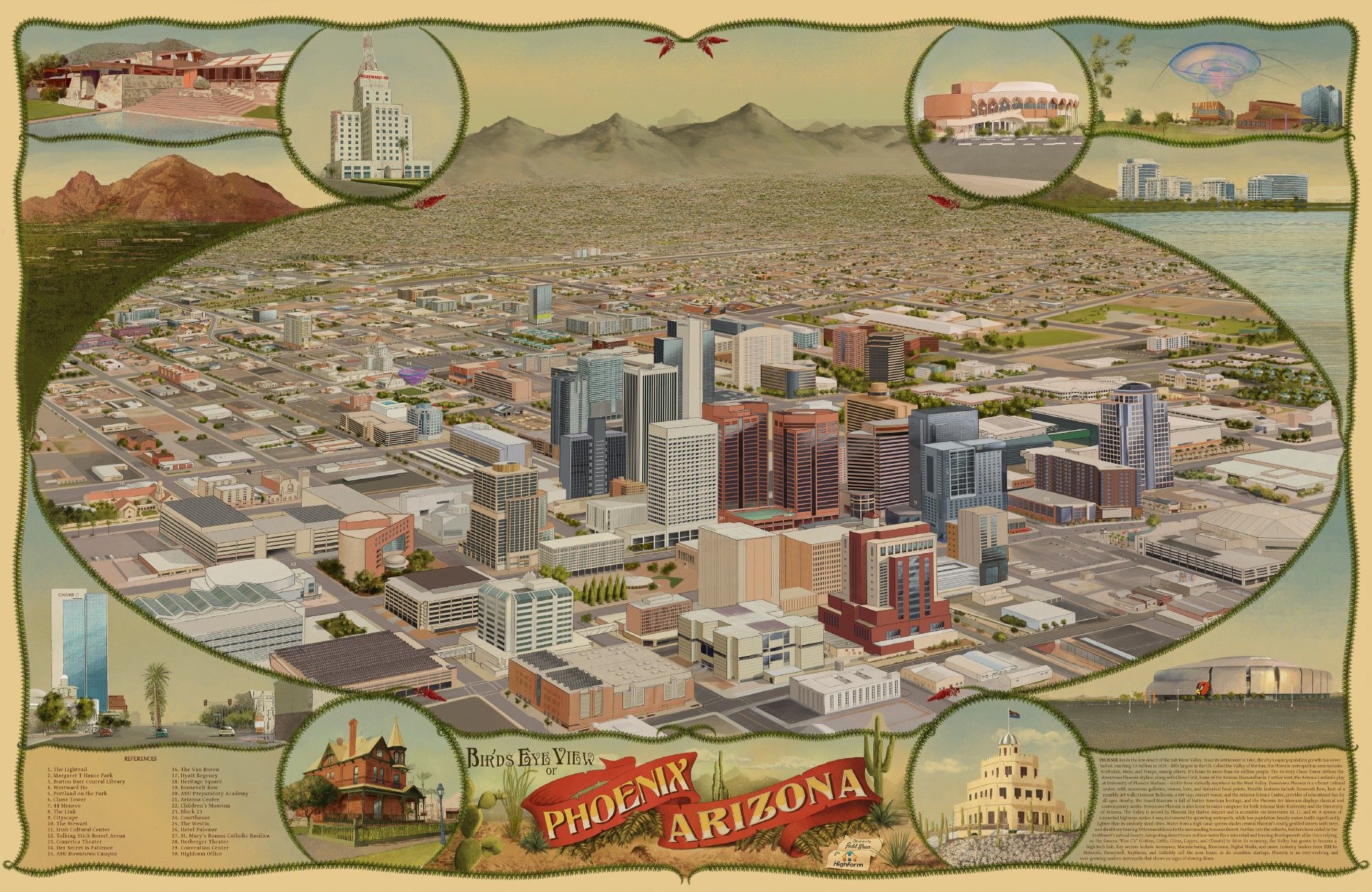Amazon brings us any goods we could ever want. Expedia brings flight to our fingertips. Samsung brings us connected and intelligent homes. Google brings us the every ounce of the world’s knowledge. AirBNB gives us an on-demand roof over our head, anywhere and any time. But who brings us homes?
For all the change in the world, it’s astonishing how little the real estate industry has changed over the years. It seems safe to say that the largest innovation to ever hit the industry was the advent of the modern-day MLS. For anyone wondering, that was in the late 1990’s. It’s been 20 years since.
In 2016 alone, the National Association of Realtors (NAR) spent nearly $130,000,000 to lobby Washington and support candidates. It’s logical for the group to spend big money protecting the careers of real estate agents and professionals, but the byproduct is stunted innovation; an industry-wide obstruction of technological improvements.
Below, we’d like to explore innovations that are already occurring. This isn’t a speculative future, this is the future we’re already seeing go live. This is how the business of real estate will be conducted. NAR be damned.

Centralized and Open Listings
aka The Death of the MLS
In 2014, I attended a panel at the SCPA wherein brokers asked six first-time homebuyers questions about their experiences. The purpose of the event was to help industry professionals better understand how to market to and assist buyers (primarily millennials) as they move into homeownership.
Something incredible happened during the panel. When asked about their their preferences in real estate search and their thoughts on agent-provided MLS portals, all six expressed that they found MLSs cumbersome. All six said they would ignore their agent and search solo on Zillow and Trulia.
This should have been a resounding warning to the local association. It should have been a sign of things to come for every broker. It should have been a lesson in how to communicate with young people to agents. Instead, It fell entirely on deaf ears. It was glossed over and they moved onto other, less insightful questions.
Associations and MLSs famously hoard their data. It’s difficult to get your hands on a RETS license and alternative options are prohibitively expensive. Getting national data feeds costs roughly $1M annually.
Yet, even with these difficulties in obtaining data, Zillow manages to provide a superior property search experience. Your local MLS holds, truly, all the cards… and they’re still losing. How?
We’ve all heard the regurgitated statistics of how many homebuyers start their search online. Still, to recap:

52% found their own home online
That is to say: Their agent played no role in the process of locating the home they later purchased.
77% drove by a home they found online
Most homebuyers experience their first “tour” of the property without an agent even knowing. Find home online, drive by it alone.
This means, by and large, buyers are only bringing in agents on the steps where they absolutely have to: actually getting keys to get in the door.
The modern homebuyer avoids real estate agents until the latest possible step. Generally, when they need a lockbox code. This speaks volumes about the changing value of agents. Self-sufficiency is spreading.

Perhaps the single most spectacular failure of MLS systems nationwide is that of design. And perhaps the MLSs have accepted defeat in the innovation arms race. As the population becomes entrenched in deeply addictive design experiences (from Apple products to Facebook software), user experience has become a pivotal element of usability in general. I’ve yet to find an MLS system that takes UI/UX into account in their systems. User experiences are bulky and unaccommodating. Insignificant data is displayed just as prominently as critical data.
Local associations and MLS providers would have to begin running a sprint to catch up and have any hope of stalling the progress of the innovators. That is not a realistic expectation. Therefore, the MLS’s usefulness will continue to fade. And public portals will dominate the market.

Urbanization and Mobility
aka The Death of the “White Picket Fence”
We’ve all read the articles about housing trends. We all know cities are growing and traditional suburbs are waning. There’s no need to repeat what every analysts has already fed you. However, we can’t possibly write an article on the future of real estate without touching on it. So, instead, I want to bring your attention to three facts:

1. Modular housing is making waves.
Perhaps the most notable company in this space today is Kasita. They made headlines three years ago when they announced their productized houses. As easy to purchase as an iPhone, they can be stacked and moved from city to city — the perfect answer to millennial home ownership worries. Homes are already available. Multiple other companies have spring up in Kasita’s wake, including PATH, Homb, Vipp Shelter, and Coodo. Clearly this is becoming more than just a trend.

2. Urban connectivity is drawing massive investments.
Sure, Tesla and Uber are paving a new path forward in self-driving vehicles. And sure, more and more cities are investing in standardized urban transport methods (such as light rail). But beyond all that, there lies an even deeper trend taking shape: Across the country, cities are investing in their own high-tech approaches to urban connectivity issues.

3. Car sales are dropping and walkable communities are thriving.
The automobile is the backbone of American neighborhoods, yet they’re slowly being rejected by millennials. Car ownership and miles driven per year are at all time highs. But both of these stats are overly inflated and misleading due to the higher ownership and high free-time of boomers. Our younger generations are rejecting ownership and significantly more likely to opt for on-demand vehicle solutions instead. This, coupled with the growing realization that millennials prefer walking to driving as their primary mode of transportation by a staggering 12%, is bringing rise to what’s becoming known as the ‘Surban’ community. Suburban communities, just outside of major cities, that are hyper-walkable.
As these industry changes begin to take shape, it would be wise for brokerages and agents to begin working them into their brand message now. Mobility in homes will no longer be viewed as the plight of the impoverished. “Inner-city” is no longer a negative term. And the size of a home’s garage will soon be a negative, not a positive. Structure your 10-year plan accordingly. These are the demands of tomorrow’s buyer.

Virtual Reality
aka The Death of Showings
In our previous post, Virtual Reality is radically changing multi-family sales, we explored how virtual reality is quickly changing the face of sales in the condo industry.

Companies like Matterport are making VR tours accessible for listings. Start-ups like Highform are making VR tours possible for under construction properties. VR apps like Transported are blurring the line between gaming and property tours. And aggregators like Zillow and brokerages like Sotheby’s are implementing widespread efforts to integrate VR tours throughout their digital properties. In short: it’s already spreading.
This isn’t to suggest that showings and tours will die. Homebuyers will always want to see it before they buy it. However, two important things will come of this:
- VR/AR will lead to an increased confidence in blind purchases, leading investors and cross-country movers to be more likely to buy, sight unseen.
- Buyers will have less incentive to contact agents. In 2017, the average buyer toured 7–10 homes before making a final decision. If this can be brought down to one (just the one they fall in love the most with through alternative reality experiences), how does this affect the role of the agent?
A study conducted by Zillow found that, overwhelmingly, buyers say the most useful task agents perform is “takes me on private tours”. VR has the potential to undermine the most pivotal role of the modern agent.
All things considered, it’s not quite time to worry too much. Virtual Reality is likely just a fad. It’s cumbersome and expensive technology that probably won’t become readily available in American households. However, it’s paving the way for Augmented Reality and an even larger stream of possibilities. With Apple openly admitting that it’s investing heavily in AR technology, that’s where we should keep our eyes peeled.

Blockchain
aka The Death of the Traditional Title
I won’t bore you with an explanation of exactly what blockchain is, but, if you are interested, this Lifehacker article does a great job of breaking it down. In their words, blockchain is nothing more than a “shared record book”.

More important than its meaning is its result. Blockchain technology enables every real estate process and profession to quickly and securely share data and funds. This removal of middlemen will lead to massive shifts in terms of processes and expenses involved in conducting transactions.
There are massive implications for blockchain in the world of real estate. But, for the sake of time and length, we’re going to focus on the one we think will be most dramatic: title records.
In its current state, the title industry is a decentralized mess. Data is stored at the local level and controlled by counties and title companies. But there is a dramatic shift taking place in Illinois.
Cook County is spearheading an effort to modernize the process. In 2016, they began experimenting with blockchain technologies for transferring and tracking the changing hands of property titles. When a property is purchased, a digital token is created and provided to the purchaser (along with a traditional paper deed). This token then serves as proof of ownership.
As this technology spreads nationwide, it will create a decentralized database of nationwide title. Unbelievably fast and uncommonly secure, by nature.

Artificial Intelligence
aka The Death of the Agent (As We Know It)
There’s a new brokerage in Denver that, depending on how much of a futurist you are, should either terrify or excite you. Meet REX.
As we transition our entire lives to online platforms, a trove of data becomes available. A roadmap that allows algorithm to know you better than you know yourself. REX seems to be the first company utilizing big data in a truly game-changing way.
“We can predict who will be the buyer for your home. We are not relying on the multiple listing service to find us a buyer,” said REX founder Jack Ryan
REX uses a series of algorithms to make determinations on every step of the home selling process. Web traffic informs them of potential buyers, neighborhood data informs them of pricing trends, predictive analytics even guide decisions like when to hold an open house or which social networks to advertise on.
And yet, this is barely scratching the surface of AI’s potential. To understand where this starts (and ends), we need a baseline of what AI is.
Artificial intelligence is an inherently broken term. We are no where near achieving any level of “intelligence” among machines. But what we have nearly perfected is giving machines the ability to analyze massive troves of data and make systematic determinations utilizing that “knowledge”. As an example, IBM’s Watson (likely the most famous example of current-day AI) can analyze massive troves of data and recommend cancer treatments that doctors have overlooked, yet the platform still isn’t smarter than a fifth grader.
General concepts of intelligence aside, we don’t need AI to think like a human to disrupt an entire industry. We just need it to be more effective than ourselves at analyzing data. And it doesn’t hurt if we can feed it a data source more robust than that of which we’d be willing to share with each other.
Enter social media.

It knows your place of work and your job title (and therefore your income). It know your lifestyle and hobbies (and therefore your expenses). It knows your assets (and therefore your debt). It knows the businesses you frequent, your culture, your sexuality, and your politics (and therefore your ideal location). It knows your age, your hobbies, what angers you, and what delights you (and therefore your finish preferences, lifestyle needs, etc.). It knows you better than any real estate agent ever could without you having to say a word.
REX is just the beginning. Whether it’s a massive brokerage making the investment, Zillow branching off, or an entirely new startup: Someone will, very soon, leverage this openly available technology with the goal of agent elimination.
The only question is, will it catch on? Ask travel agents their thoughts.
These technologies are not fantasy. They exist and are in use now. Disrupters and innovators are feverishly building and programming. The change will be here before you know it. Surviving will require a forward-thinking strategy informed by not only a finger on the pulse, but also an ear to the ground.
Highform partners with real estate companies to develop futuristic products and platforms. If you can dream it, we can bring it to life. Let’s talk.




